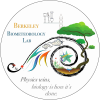Reports
Contents
| Title: | MB Eosense CO2 Comparison | ||||||||||||||
| Date: | 2017-05-10 - 2017-05-25 | ||||||||||||||
| Data File: | preset_110 | ||||||||||||||
| Refers to: | MB,GP20160070,GP20160069,GP20150111 | ||||||||||||||
|
Three eosCO2 sensors (sn GP20160070 (0-1% range), sn GP20160069 (0-1% range), sn GP20150111 (0-2% range) were installed at Mayberry since 2016/2017 at different depths under the water level. On 2017-05-10, the three sensors were moved from a fence post in the middle of the channel to a fixed boom attached by guywire to the tower. The three sensors were co-located 10cm under the water level (20 cm above the soil level). Two weeks later on 2017-05-25, Joe installed a floating boom and we adjusted the depth of the sensors. Two sensors (sn GP20160070, sn GP20150111) were located ~15cm under the water level. The third sensors (sn GP20160069) was lowered to 62cm under the water level. These two periods provide a chance to quickly cross-compare the sensors. 2017-05-10 to 2017-05-25: sn GP20160070, sn GP20160069, sn GP20150111 at -10cm depth 2017-05-25 to 2017-06-05: sn GP20160070 and sn GP20150111 at -15cm depth (sn GP20160069 at -62 cm depth) Summary: There seem to be a lot of sensor variation in dissolved CO2 measurements. Even when the sensors were right next to each other, there was different diurnal variations and varying daily maxes. Temperature information matched well among the 3 sensors. Figure 1. Water CO2 time series of 3 sensors co-located at -10cm depth. A lot of variation even though the 3 sensors were right next to each other. GP20160069 (purple line) does not show much diurnal variation until the 2nd half of the comparison. GP20150111 (teal line) has consistently higher peaks (about double) than the other 2 sensors. In fact, GP20150111 (teal line) and GP20160070 (green line) had well-matched mV outputs, but are scaled differently because GP20150111 is a 2% probe. GP20150111 tested well in the lab, so maybe there is a problem with GP20160069/GP20160070.
Figure 2. Water CO2 scatter of 3 sensors co-located at -10cm depth. Generally, the three sensors are not well matched. The slope was either close to 1/2 or close to 2. There was a lot of diurnal scatter (R2=35%) between two 1% sensors GP20160070 (x-axis) and GP20160069 (green line). There was much less diurnal scatter (R2=90%) when we compare GP20160070 (x-axis) and GP20150111 (blue line). Figure 3. Water CO2 time series when 2 sensors were co-located at -15cm depth and the third sensor was at -62cm depth. The 3 sensors seem strangely better matched now that they're located at 2 different depths, especially between 31 May and 17 Jun. There's a big difference between the 2 sensors at -15cm (light green line, teal line) on 21-22 Jun. One sensor climbs to 4000ppm over 12 hours, while the other sensor right next to it stays under 1000 ppm.
Figure 4. Water CO2 scatter when 2 sensors were co-located at -15cm depth and the third sensor was at -62cm depth. It's messy. The 2 co-located sensors (blue line) have an equally bad fit as the 2 sensors that are located at different depths (green line). Figure 5. Temperature time series of all 3 sensors. The 3 sensors were co-located at -10cm depth from 2017-05-10 to 2017-05-25. Generally well matched. GP20160069 (purple line) has slightly more extreme max/min in the first few days of the comparison, the same period it did NOT have much diurnal variation in water CO2.
Figure 6. Temperature scatter of 3 sensors co-located at -10cm depth. Generally well matched with slopes close to 1 and offset close to 0. More scatter (R2=78) with GP20160069 (green line), very well matched (R2=99) than with GP20150111 (blue line).
Figure 7. Temperature scatter when 2 sensors were co-located at -15cm depth and the third sensor was at -62cm depth. Again, well matched with slopes close to 1 and offset close to 0. Not much scatter with either sensor. |
|||||||||||||||
| |

